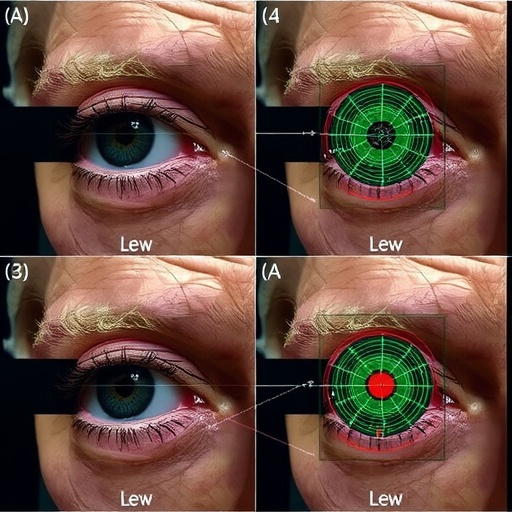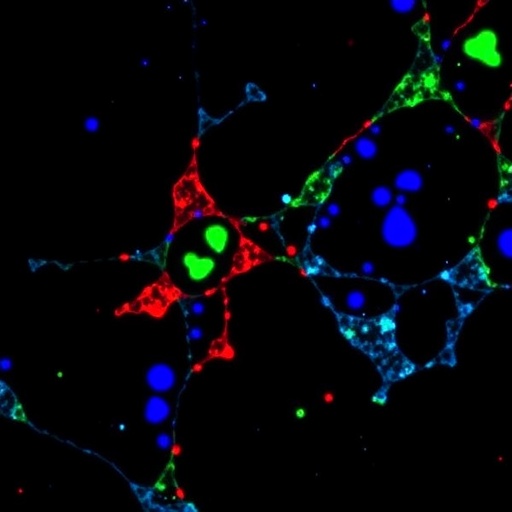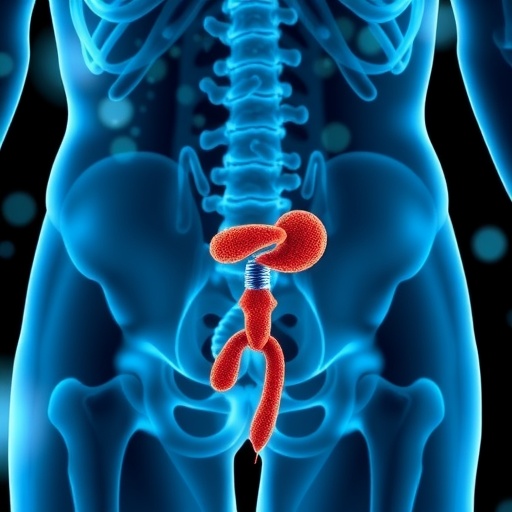In a groundbreaking stride toward early diagnosis and monitoring of Parkinson’s disease, a team of researchers has unveiled an innovative method for the automatic analysis of eyelid movement in individuals newly diagnosed with Parkinson’s. The study, published in the prestigious journal npj Parkinsons Disease, explores how subtle alterations in eyelid dynamics, often imperceptible to the naked eye, can serve as critical biomarkers in detecting and understanding the progression of this neurodegenerative disorder. This pioneering research could transform clinical practices by providing a non-invasive, rapid, and objective tool for clinicians worldwide.
Parkinson’s disease, characterized primarily by its motor symptoms such as tremors, rigidity, and bradykinesia, has long challenged scientists and doctors attempting to pinpoint early indicators before the hallmark symptoms fully manifest. Traditionally, diagnosis relies heavily on clinical evaluations and patient history, which can be subjective and prone to delays. The discovery that eyelid movement — a seemingly minor and involuntary feature — can be quantitatively analyzed to reveal underlying neurological dysfunction introduces a paradigm shift in how Parkinson’s might be approached diagnostically.
.adsslot_I8D7Hr0Tzw{width:728px !important;height:90px !important;}
@media(max-width:1199px){ .adsslot_I8D7Hr0Tzw{width:468px !important;height:60px !important;}
}
@media(max-width:767px){ .adsslot_I8D7Hr0Tzw{width:320px !important;height:50px !important;}
}
ADVERTISEMENT
The concept of utilizing eyelid movement as a biomarker is rooted in the understanding that Parkinson’s disease affects the basal ganglia circuitry, which plays a pivotal role in controlling motor functions, including involuntary muscle movements. Eyelid dynamics, tightly regulated and frequently occurring, are particularly susceptible to disruptions caused by dopaminergic deficits. The automated analysis enables a granular inspection that surpasses the traditional observational methods, highlighting minute deficiencies indicative of neurodegeneration.
What sets this method apart from previous diagnostic attempts is its objectivity and reproducibility. Human observation, even from experienced neurologists, is inherently limited by variability in interpretation and the fleeting nature of certain motor symptoms. By contrast, the automated platform standardizes data acquisition and analysis, thus ensuring consistent results across different clinical settings and patient populations. This consistency is vital for tracking disease progression and evaluating therapeutic responses over time.
The study’s cohort included patients categorized as de-novo Parkinson’s disease, meaning those recently diagnosed and not yet subjected to medication. This critical detail enhances the relevance of the findings, as it demonstrates that eyelid movement abnormalities can be detected before pharmacological intervention potentially alters motor function patterns. Such early detection capability holds promise for preemptive therapeutic strategies and opens avenues for preventive care in at-risk populations.
Intriguingly, the researchers’ machine learning model was trained on a vast dataset that included diverse patient profiles and control subjects. This inclusive approach ensured that the automatic analysis system could generalize well across different demographics, accounting for variables such as age, sex, and ethnicity. The robustness of the model underlines its potential utility in real-world clinical environments, where patient heterogeneity is the norm rather than the exception.
Furthermore, the technology’s non-invasive nature addresses a crucial demand in neurological diagnostics. Conventional techniques often involve expensive and sometimes invasive procedures such as MRI, PET scans, or lumbar punctures. In stark contrast, eyelid analysis requires only a simple, camera-based setup that can be deployed easily in outpatient clinics, telemedicine platforms, or even patients’ homes. This scalability could democratize access to high-quality diagnostic screening globally, particularly benefiting under-resourced regions.
Moreover, the study casts light on potential mechanistic insights into Parkinson’s disease pathology. By quantifying how specific eyelid motor parameters change with disease onset and progression, it contributes to a finer mapping of basal ganglia dysfunction and its peripheral manifestations. These findings might stimulate further research into connecting neural circuit disruptions with observable motor behavior, fostering deeper understanding and novel therapeutic targets.
Ethical considerations also emerge from deploying automated diagnostic tools. The study acknowledges the importance of data privacy, informed consent, and transparency in machine learning applications. Given the sensitivity of health-related data and the stakes involved in diagnostic accuracy, the researchers emphasize stringent protocols to safeguard patient information and prevent algorithmic biases. This ethical framework is crucial for garnering trust among clinicians and patients alike, facilitating smoother integration of AI-driven technologies into healthcare.
The excitement surrounding this innovation lies not only in its immediate clinical utility but also in its potential to revolutionize neurological diagnostics. The ability to detect Parkinson’s disease at its incipient stages through a tiny, involuntary movement embodies a leap forward fueled by technological sophistication and clinical insight. As further validation studies take place, the hope is that this method becomes a standard part of neurological examination protocols worldwide.
In summary, this study heralds a new era where artificial intelligence and precise biometric analysis converge to confront one of the most challenging neurological diseases of our time. The automated analysis of eyelid movement represents an elegant solution that is accessible, objective, and clinically impactful. Its adoption could lead to earlier interventions, improved patient outcomes, and deeper understanding of Parkinson’s disease pathophysiology. Such advances epitomize the intersection of cutting-edge science and compassionate healthcare.
As the global burden of Parkinson’s disease continues to escalate with aging populations, innovations like this become critical. Early diagnosis enables patients and their families to plan and adapt, potentially mitigating the disease’s debilitating effects. Moreover, it opens the door to targeted therapies designed to halt or slow progression before substantial neural loss occurs. This research not only informs medical science but resonates profoundly on a human level.
In conclusion, the application of automated eyelid movement analysis in de-novo Parkinson’s disease is poised to make waves in both research and clinical landscapes. It exemplifies how harnessing technology to decode subtle physiological signals can unearth powerful diagnostic markers. As the field evolves, embracing multidisciplinary collaborations that blend neuroscience, engineering, and data science will be key to unlocking further mysteries of neurodegeneration and delivering tangible benefits to millions worldwide.
Subject of Research: Automatic analysis of eyelid movement as a diagnostic biomarker in de-novo Parkinson’s disease.
Article Title: Automatic analysis of eyelid movement in de-novo Parkinson’s disease.
Article References:
Kälble, L., Tykalova, T., Zogala, D. et al. Automatic analysis of eyelid movement in de-novo Parkinson’s disease. npj Parkinsons Dis. 11, 153 (2025). https://doi.org/10.1038/s41531-025-01021-z
Image Credits: AI Generated
Tags: advanced imaging technology in healthcareautomated eyelid movement analysisautomated systems in neurologybiomarkers for neurodegenerative disordersearly diagnosis of Parkinson’s Diseaseeyelid dynamics and neurological dysfunctioninnovative research in Parkinson’s monitoringmachine learning in medical diagnosticsnon-invasive clinical tools for Parkinson’sobjective assessment of Parkinson’s symptomssubtle motor symptom detectiontransformative approaches to Parkinson’s diagnosis





